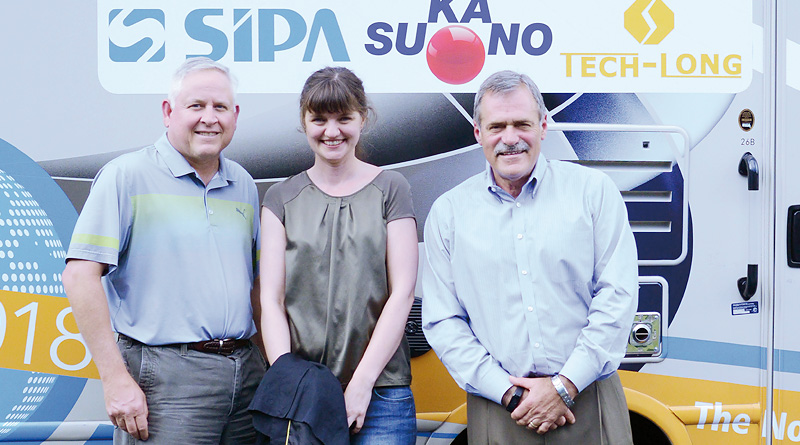A satisfying piece of work
Planning and processing plants for the beverage industry
Back in 1998, the founders of PET Terra Systems recognised the need in the plastic container and beverage industries for a more scientific approach to process and engineering; in January of that year PET Terra Systems (PTS) was incorporated. The company was started in 1998, but was founded with a core group of subject matter experts whose experience went back to the first commercial use of plastic beverage bottles in 1979.
We met: Paul W. Clark and Larry LaFerriere
The original PTS staff was built to combine manufacturing experience, professional engineering skills and statistical expertise. “Our objective was to apply science and process engineering to eliminate the widely held illusion that making plastic bottles was some sort of magic trick. Interesting is our process expertise, which is around blowing bottles and injecting preforms – that is my background. I started in the plastics industry in 1979, at Amoco Container, a company that now belongs to Silgan Plastics and was one of the first two companies to commercially produce a PET bottle, Paul explained.
He went on: “Since then, we have grown both in size and scope of services. Our expertise spans all facets of a project from the exploratory phase through ongoing operational support. We have also expanded outside of plastics to include the food and beverage industry as well as other manufacturing segments within the United States and abroad. A good example of our unique capability is that most of the major bottling companies use our services to qualify new bottles. When they want to qualify a new resin or container, they ask us to support those efforts jointly in most cases with the various equipment suppliers like Krones or Sidel, KHS, Tech-Long and so on. That is not typical to an engineering design firm.”
They support their clients from the very beginning. “We can provide conceptual design services that provide a ‘visual picture’ of a proposed system solution. The conceptual design process allows us to generate multiple alternatives that illustrate various approaches, configurations and layouts for client evaluation. Conceptual design endeavors can involve complete plant layouts, processing areas, production lines or utility systems depending upon the proposed scope of a particular project. Our design work is done primarily in 3D which results in improved quality of the product as well as execution in the field. We have developed proficiency with modeling software that allows us to provide a ‘walk through’ of Conceptual Design alternatives in a virtual world.”
They advise their clients in utility systems like air compression systems, chiller plants, water cooling and boiler systems as well as material handling systems or HVAC systems. “When we do a project, we stay around typically through the start-up and optimisation phase. In support of that, we implement what we call the process control plan which gives the customer a set-up of operating guide lines in which to control their processes. Everything we do is building up to designing and integrating systems which supports our customers to get to the optimal point in efficiency of production and processing.” In addition to utility and process design, the company is also specialised in control systems and power distribution. Beyond engineering, project management and controls implementation, PTS is committed to helping customers develop a complete system of operating guidelines. They offer training courses and operational tools for daily life business. PTS is particularly well known for courses in PET 101 which covers many key areas of preform and bottle production including – Blow Moulding Process Theory and Process Optimisation, Injection and Blow Moulding Process Theory and Application also Design of Experiment – Statistical Modelling of All Processes (filling, labelling, packaging, closure manufacturing, extrusion moulding, injection moulding, reheat blow moulding, etc). PTS also provides training programs in statistical Process Control – SPC Theory, SPC Application, SPC Programming, etc. and a Comprehensive Six Sigma Certification Program.
Paul sees that the greatest strength as an engineering and design firm are the people working there. “What started as a 2-person company has grown into an organisation of over 35 engineers which eventually will include 18 owners by year-end. That’s unique. Half of the people working here are owners. Going back ten years everyone working here was an owner. This has always been our philosophy and the culture that we wanted to develop. We want our employees to take ownership in the company because we feel like that tends to get them to take ownership in the projects. It creates a lot more pride because it’s theirs. That works well for us. We are a team in every sense of the word. Our people have the autonomy to make a difference. The joy in what we do is being able to do the front-end planning, design work, the actual execution, and finally, teaching the people. To us, this is a very satisfying piece of work.”

